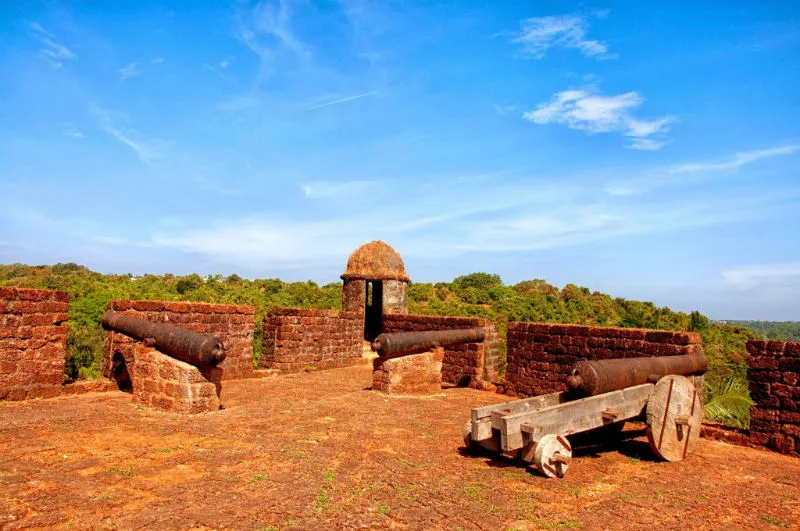
In the monsoon season, Goa stands as a hidden gem waiting to be explored. The monsoon rain brings along fresh coastal breeze, lesser crowds, extremely cheap hotels and transport rates. While this month might not be the ideal time to sunbathe or do some water sport activities, it is the right time to go and explore historic sites. So come and checkout these Historical Sites to Visit in Goa During Monsoon.
Shri Ramnath Temple

Shri Ramnath Temple, in Loutolim houses the idol of Lord Ramnath. It is also one of the Historical Sites to Visit in Goa During Monsoon. The temple was established by the Gaud saraswat brahmins from ra,eshwar. In order to avoid persecution from the Portuguese, the idol was relocated to another location. This location was under the control of the Bijapur’s in Bandivade. In today’s era, the temple also houses a few other deities like Shri Laximi Narayan,Shri kamakshi, Shri Santeri, Shri siddhanath. This temple is different from the other Goan temples, It has a grand hall with no pillars and also has a gallery especially for womens.
Monastery of St. Augustine tower

In Old Goa, near the nunnery of Santa Monica, Stands a tall tower. It is believed to be the the last surviving tower of the church that once use to be the grand church of St. Agustine. It is also the biggest church in Goa. Built by the agustinian order between 1597 to 1602. The tower has eight chapels, four altars and a grand choir loft. After the Agustinians were expelled in 1835, the church was abandoned, which led to its ruin leaving it with just one tower. The tower was then recognised as a UNESCO world heritage site 1986.
Reis Magos Fort

Reis Magos Fort is Goa’s one of the oldest forts. This fort sits on the banks of the river across Panjim and was built by the Portuguese in the 15th Century as a defence fortress. Later it served as a jail and hospital before falling into disrepair. The fort was later repaired and opened to the public for visit in 2012. The fort’s reddish walls are a landmark visible from Panjim.
Cabo de rama fort

Located in the heart of South Goa’s Canacona region, lies a famous fort called Cabo de rama. It captivates the 17th Century Portuguese fort steeped in legend and history. According to local belief, it served as a refuge for Lord Rama, Goddess Sita, and Lord Lakshmana during their 14-year exile. Today, though mostly in ruins, the fort offers breathtaking views of South Goa’s scenic coastline. Originally constructed by the Hindu Soonda rulers, Cabo de Rama was seized by the Portuguese in the 1760s and transformed into a military stronghold and later a prison. At its entrance stands the Church of Santo Antonio, a modest chapel still used during the annual feast, adding to the fort’s mystical allure and historical charm.


